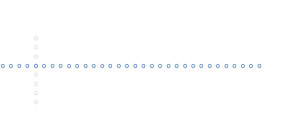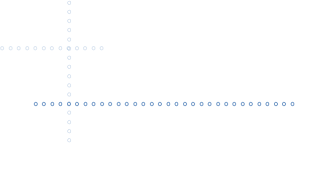A Tale of Two Halves – Q1 Update
07th April 2021

Thank you for your patience



07th April 2021

A tale of two halves.
By Saftar Sarwar, Chief Investment Officer, Binary Capital Investment Management
During the quarter we passed into the anniversary of the first pandemic-induced lockdown. A time for reflection. A year into this ‘experience’ there is an end pathway firmly in sight. The loss of so many during the pandemic is still difficult to bear and will be with us for many years to come.
The second half of this year will look and feel very differently from the first half of this year. The key bright news from the last twelve months has been the vision, speed and essence of the vaccination roll-out. It truly has been an achievement of human ingenuity and genuine vision. We can only but admire.
The scale and speed of the vaccine roll-out varies from country to country, vaccine politics, has, sadly, played a significant part. The success of the UK vaccine programme (over 50% of adults vaccinated) this quarter is driving the agenda to the eventual unlocking of society and the economy. Many investment markets started the year with positive momentum, this carried forward into the middle of February, with high growth technology markets such as the NASDAQ Index reaching record highs. The year started with optimism.
Sometimes perversely too much of a good thing can be problematic. The scale of the vaccine roll-out and the enthusiasm around future economic growth has create inflation and rising interest rate tensions and concerns. Investors have been concerned around the rising of a key interest rate indicator: the yield on the 10yr US government bond - and importantly how the bond markets seems to be ahead on economic insight over central banks, specifically the US Fed. The US bond market is apparently a better forecaster than the central bank – we will see, time will tell. This, and other reasons, resulted in a sell-off and rotation from growth to so called value positions, with banks, energy stocks leading the way. We feel these inflation and interest rate concerns are misplaced and the philosophy of low interest rates for longer remains intact.
Therefore, first half of the quarter was growth and bullish market trends and then suddenly that changed from mid February onwards, markets started trending the other way – a big reversal. Looking at this in isolation, it is interesting how the investment markets can switch so quickly on the back of such random or unusual data points. Investment markets and hence investors are clearly nervous.
So where do we go from here? How does Q1 developments imply for the rest of the year? What do we need to look further at to make investment decisions? So much to do. So much information available to us.
Importantly, it pays to be cautious and patient: take time looking over all of the data in Q1 and try and understand how much of the market movement, if any, can actually be understandable. As we have noted in previous commentaries investment market movements, least in the short-term, can often be fairly random. Beyond this randomness we then try and make sense of what is actually going on. We need to be mindful that this current period of volatility is not new, there have been episodes of such volatility in the recent past, and there will be such volatility and rotational movements in the future. It happens. Markets go up, markets go down.
A correction in markets is never forewarned. We live with randomness every day. That is why it pays to have that long-term and patient capital approach to investing, investing through the noise and daily market movements. During the current market turmoil, we remained calm and did nothing to change things around. We put into play our long-term and cautious strengths, our focus on genuine long-term asset allocation and investment selection. After all, if we have a fundamental belief in the long-term opportunity for value creation, we need to carry that belief through, especially in such volatile times.
We have a focus on growth sectors and themes with disruptive technology and healthcare at the core of our thinking. These themes often will take a long time to play out fully, and indeed to deliver enhanced returns. This all needs to be taken into account when discussing and managing an investment portfolio. Some of the areas that we invest in are often misunderstood by the market and therefore subject to often extreme short-term volatility. It takes focus, resilience and determination to hold such positions through such changes.
Just as investments market took a sharp fall from mid February onwards then the reverse can also happen in such similar speed and depth. The asymmetrical nature of our investments indeed makes this more likely, more likely to see an upswing in our favour that is significantly larger than the downward change. That is why again it is very difficult to time in and out of different sectors and strategies. Let the volatility take care of itself and move towards a more stable phase. We note the volatility, we invest through the volatility. We invest with no reference to an index or benchmark, we invest where we see opportunities. We invest with patience and conviction.
I expect more market changes in the coming weeks as economic, inflation and interest rate expectations move around based on different covid19 vaccination success rates or not. This is important. It is not just a one-way bet, vaccinations, new variants of covid19 will change the dynamics. In around six months or so this disease will have been with us for around two years, so there is alot we now know, but there is still alot we do not know. We are not epidemiologists, we are investment professionals and aim to manage the information and data we have at our disposal alongside utilising our forecasting views. In all said and done, we do not have any expertise on short-term returns, so therefore we do not aim to forecast around this.
Our performance over the first quarter this year has therefore been a challenge. Our bias in growth sectors and themes has hurt performance. The performance has not been as dramatic as the news or volatility would suggest, indeed some of the volatility and under-performance has slowed down in the past few weeks. We continue to remain optimistic around future investment opportunities.
The US and China
We aim to take into account behavioural biases imprinted into investment markets and the race for short-term investment gratification. Our overall philosophy and strategy remains unchanged. We believe that the US and China do offer compelling investment opportunities now and for the long-term. We believe the growth in technology and healthcare will continue to be maximised in these countries and innovation from such countries. The US and China economic and investment story will be very important in the years to come and something we carefully take note of. This is not a broad approach, selective investing is necessary, indeed crucial.
Changing the DFM landscape.
We have written about this before, Discretionary Fund Management (DFM) is a very competitive and often commoditised marketplace. Alot of the investment strategies cluster together. Forward looking investment strategies can be limited and rarely well defined. What we do at Binary Capital is fairly unique in the DFM landscape: high conviction, patient capital with a long-term philosophical strategy of investing in real innovation and change. We are very different from other DFM providers.
The Future
We welcome the current investment volatility as a means, if necessary, to get market exposure at better pricing than at the start of this year. By investing long-term it will only help if we get allocations at such levels. We continue to monitor events, we hope to further play in the disruptive nature of sectors, economies and corporates in the years to come, some of this disruption is only just beginning and will take years to play out. Opportunities are always present, always available.

By making an investment, your capital is at risk. The value of your investment depends on market fluctuations outside of our control and you may get back less than you invest. Past performance is no indicator of future performance.